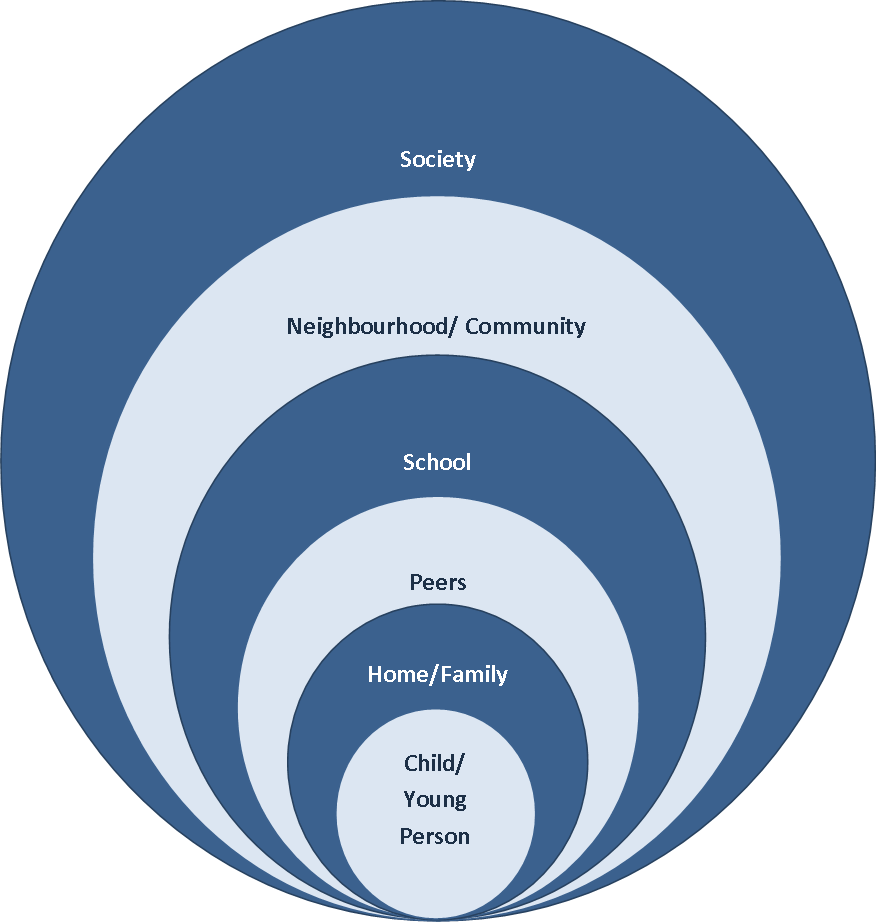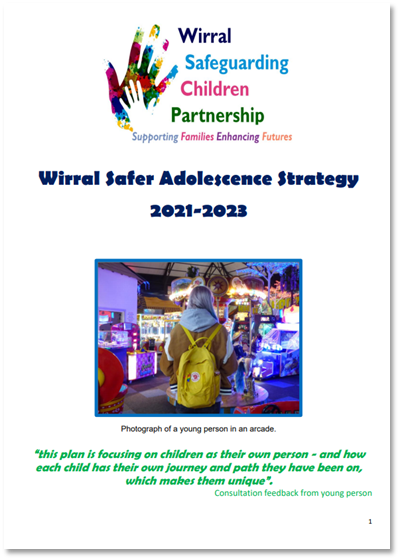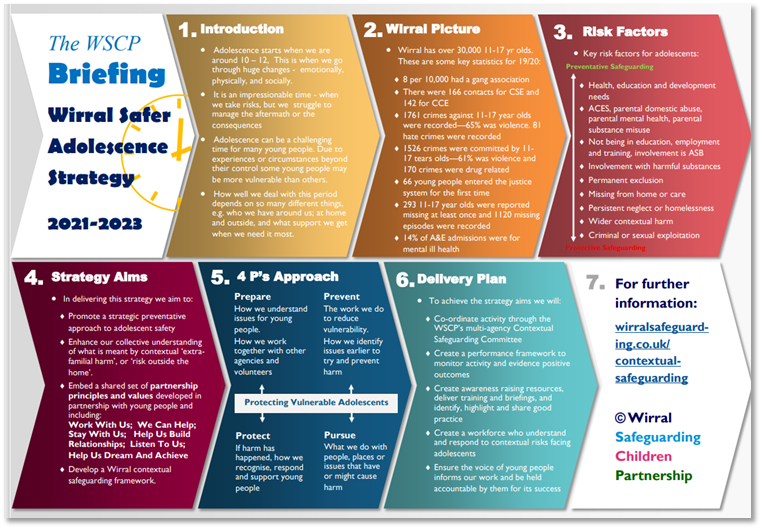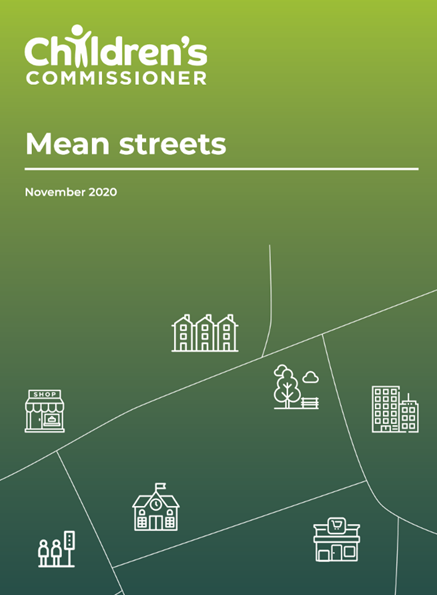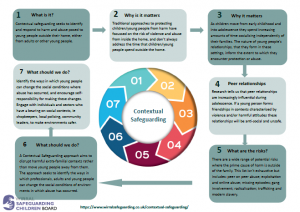Contextual Safeguarding
With great thanks to the Contextual Safeguarding Network, Durham University for the background information.
Introduction
Contextual Safeguarding is an approach to understanding, and responding to, young people’s experiences of significant harm beyond their families. Traditional approaches to protecting children/young people from harm have focussed on the risk of violence and abuse from inside the home, usually from a parent/carer or other trusted adult and don’t always address the time that children/young people spend outside the home and the influence of peers on young people’s development and safety.
Contextual safeguarding recognises the impact of the public/social context on young people’s lives, and consequently their safety. Contextual safeguarding seeks to identify and respond to harm and abuse posed to young people outside their home, either from adults or other young people. It’s an approach that looks at how interventions can change the processes and environments, to make them safer for all young people, as opposed to focussing on an individual.
Research undertaken in London illustrates that young people’s experience is not only influenced by their family, but also by their peer network,wider community and society in general.
The model of contextual safeguarding was developed by Dr Carlene Firmin.
7 Minute Briefing: Contextual-Safeguarding-7-minute-briefing
Contextual Safeguarding can be simply illustrated as:
adapted from Firmin (2015), University of Bedfordshire
Importance of Context
As children move from early childhood and into adolescence they spend increasing amounts of time socialising independently of their families. During this time the nature of young people’s schools and neighbourhoods, and the relationships that they form in these settings, inform the extent to which they encounter protection or abuse. Evidence shows that, for example: from robbery on public transport, sexual violence in parks and gang- related violence on streets, through to online bullying and harassment from school-based peers and abuse within their intimate relationships, young people encounter significant harm in a range of settings beyond their families.
Peer Relationships
Research also tells us that Peer relationships are increasingly influential during adolescence, setting social norms which inform young people’s experiences, behaviours and choices and determine peer status. These relationships are, in turn, shaped by, and shape, the school, neighbourhood and online contexts in which they develop. So if young people socialise in safe and protective schools and community settings they will be supported to form safe and protective peer relationships. However, if they form friendships in contexts characterised by violence and/or harmful attitudes these relationships too may be anti-social, unsafe or promote problematic social norms as a means of navigating, or surviving in, those spaces.
Contextual Safeguarding – Areas of Risk
Contextual Safeguarding is applicable to a wide range of risks which can potentially cause significant harm to children and young people where the prime cause of harm is outside of the family. This list isn’t exhaustive but includes:
- peer on peer and relationship abuse
- criminal/ sexual exploitation/ online abuse
- missing episodes
- risks associated with gangs
- risks associated with radicalisation
- safeguarding risks in public spaces
- trafficking and modern slavery
Safer Adolescence Strategy 2021-23
The WSCP has published its two-year Safer Adolescence Strategy. The strategy aims to:
• Promote a more strategic preventative approach to adolescent safety by raising awareness of
associated vulnerabilities.
• Enhance our collective understanding of what is meant ‘extra-familial harm’, or ‘risk outside the
home’.
• Embed a shared set of partnership principles and values for working with adolescents.
• Develop a Wirral contextual safeguarding framework.
Contextual Safeguarding and the Child Protection System
The child protection system, and the legislative and policy framework which underpins it, was designed to protect children and young people from risks posed by their families and/or situations where families had reduced capacity to safeguard those in their care. Extra-familial risks can reduce/undermine the capacity of families/carers to safeguard young people – and to this extent extra-familial risks are accommodated by existing approaches. However, in traditional systems this dynamic would be addressed by intervening with families to increase their capacity to safeguard young people from harm and/or relocating young people away from harmful contexts.
A Contextual Safeguarding system supports the development of approaches which disrupt/change harmful extra-familial contexts rather than move families/young people away from them. While parents/carers are not in a position to change the nature of extra-familial contexts those who manage or deliver services in these spaces are; and they therefore become critical partners in the safeguarding agenda. This approach would extend the concept of ‘capacity to safeguard’ beyond families to those individuals and sectors who manage extra-familial settings in which young people encounter risk.
The contextual approach seeks to identify the ways in which professionals, adults and young people can change the social conditions of environments in which abuse has occurred and then hold them responsible for making these changes. For instance, rather than housing professionals trying to relocate a young person they may seek to involve youth workers and safer neighbourhood teams to make the housing, in which the young person already lives, safer.
Therefore children’s multi-agency practitioners need to engage with individuals and sectors who do have influence over/within extra-familial contexts, and recognise that assessment of, and intervention with, these spaces are a critical part of safeguarding practices. Contextual Safeguarding, therefore, expands the objectives of child protection systems in recognition that young people are vulnerable to abuse in a range of social contexts.
Case Study
Contextual Safeguarding Case Study
a
Multi-agency Contextual Safeguarding Training
The WSCP offer a 3 hour introductory briefing to Contextual Safeguarding. Places can be booked from our training page (registration on the page required):
https://www.wirralsafeguarding.co.uk/training/courses/
Local Research
The WSCP has undertaken a series of surveys with children, young people and frontline professionals to identify how safe children and young people feel and the contextual safeguarding risks in Wirral. Click on the icon below to find out more about the surveys.
Resources and Further Reading
Mean Streets report from the Children’s Commissioner about the when, where and why children feel unsafe, and what could be done to address these fears:
The Contextual Safeguarding 7 minute briefing can be accessed here:
Contextual Safeguarding Network
The Contextual Safeguarding Network, based at Durham University, leads research into this area of safeguarding and publishes guidance, tools and resources to support all those seeking to protect children from risks outside the home.
Website: https://www.contextualsafeguarding.org.uk/
Videos from the Contextual Safeguarding Network
This short video provides an overview of contextual safeguarding and what it means in practice for different social contexts:
This short video provides a brief introduction to the principles of Contextual Safeguarding:
Dr. Carlene Firmin speaks on safeguarding teenagers from sexual exploitation and violence outside the home, and the importance of taking a contextual approach, in this video.
Resource Documents – with particular thanks to the Contextual Safeguarding Network
What is Peer on Peer Abuse Carlene Firman and George Curtis, 2015, MsUnderstood Partnership
LSASG-Survey-of-London-Professionals-Safeguarding-Adolescents-docx Dr Lucie Shuker, August 2017, Institute of Applied Social Research
Holistic-approaches-to-safeguarding-adolescents-briefing Delphine Peace and Ruth Atkinson, February 2019, University of Bedfordshire Contextual Safeguarding Network
Building-Context-into-CP-Conferences University of Bedfordshire and Hackney Contextual Safeguarding Team, February 2019
PACE Parent-Publication-2019 Parents Against Child Exploitation (PACE), 2019
Safe4Me Toolkits providing resources, activities and advice to help schools, professionals and parents to keep children safe.
Presentation for training delegates

